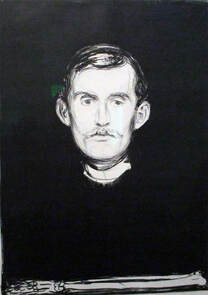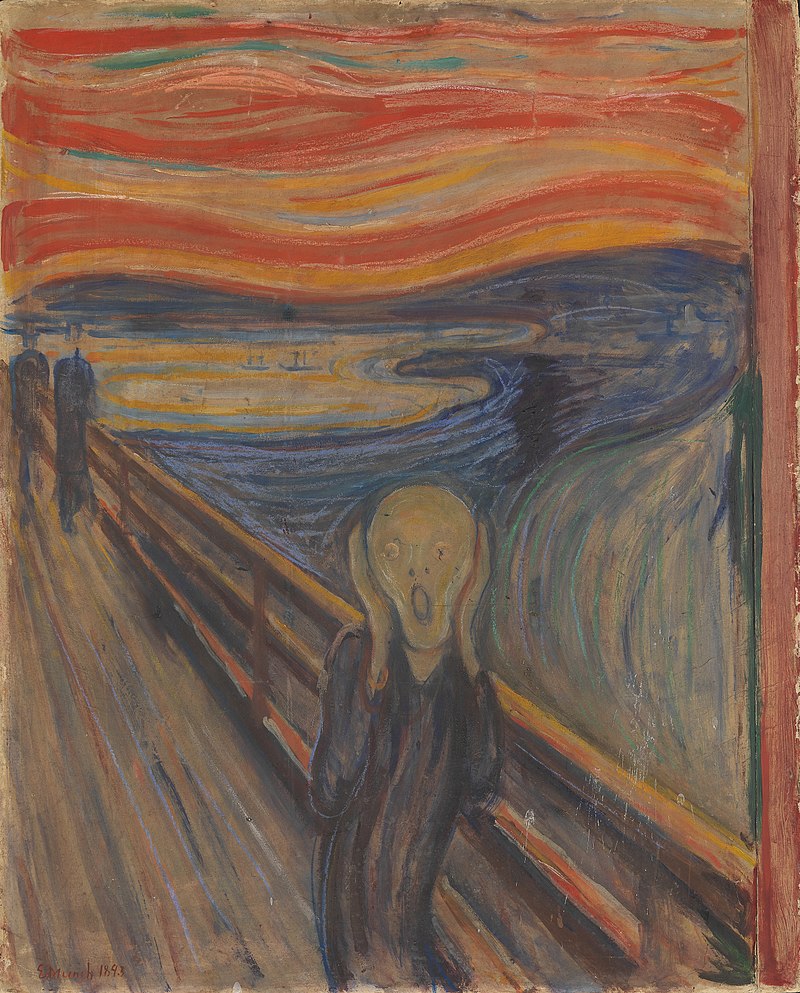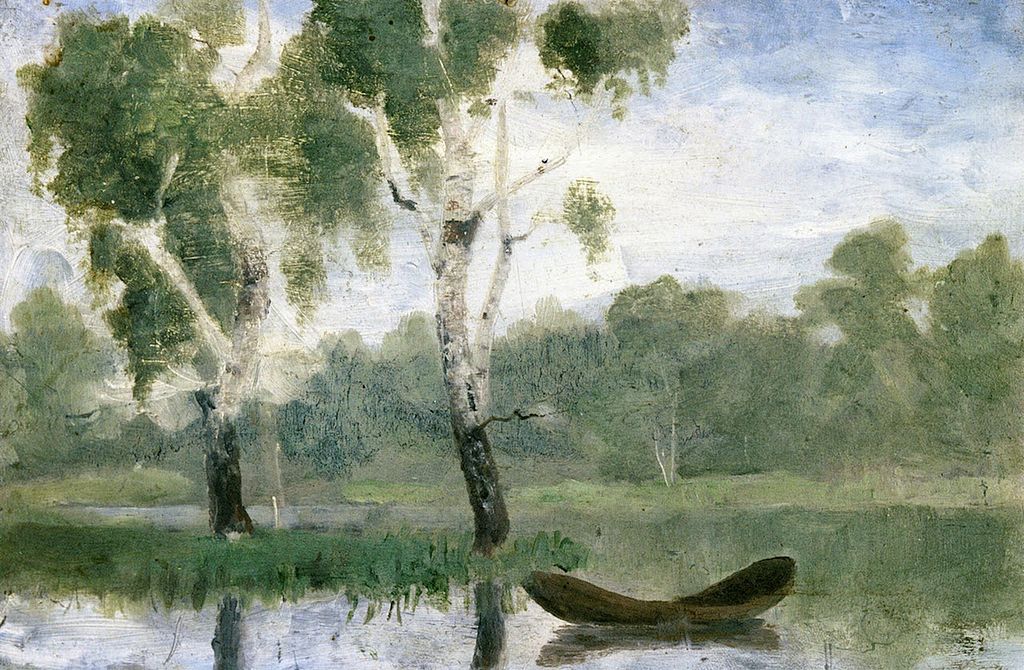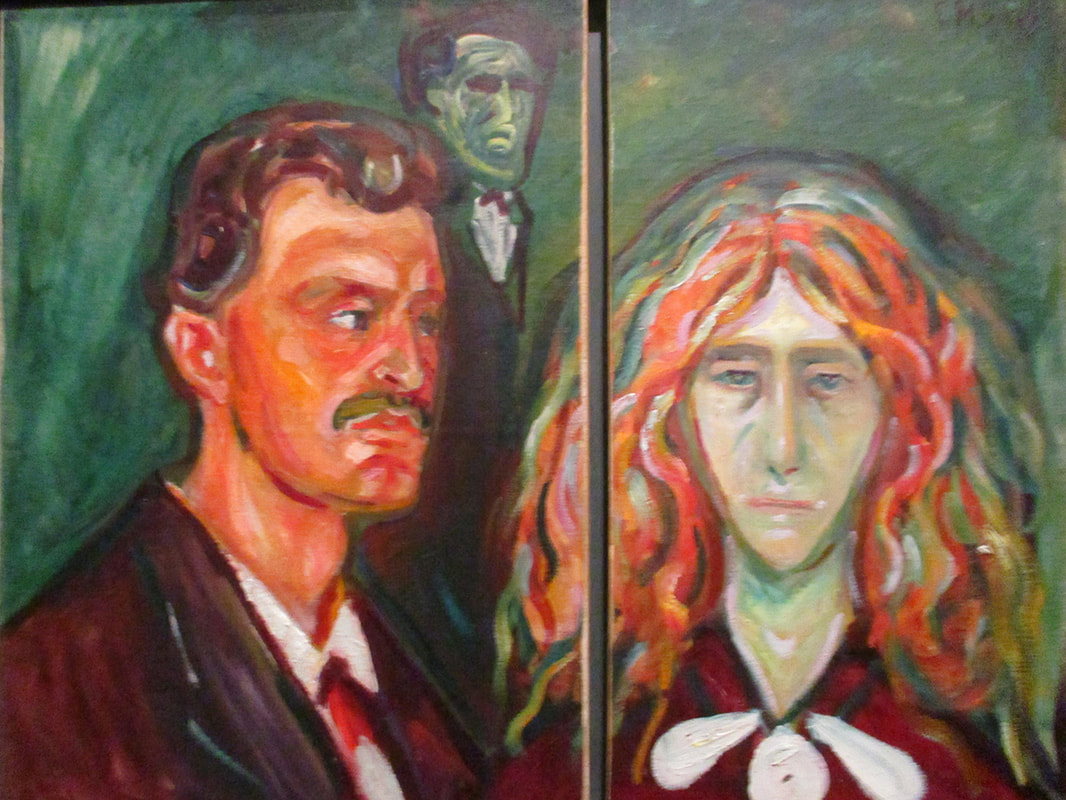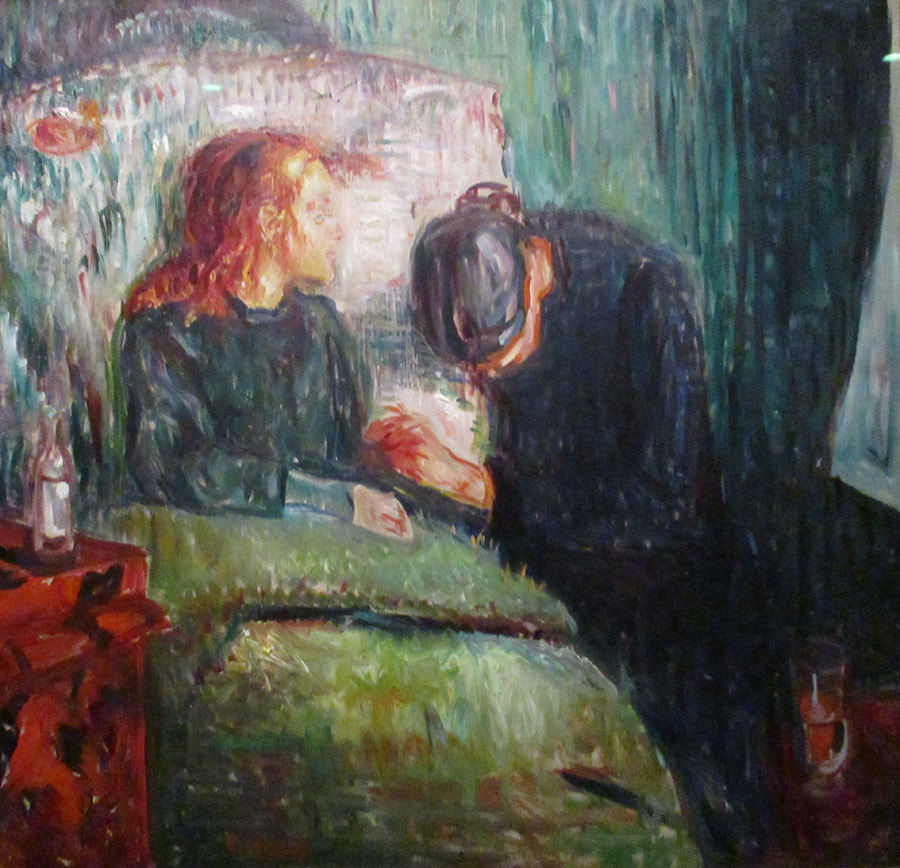An Appreciation:
|
Above: Munch's best known work is “The Scream” - a work that resonates with many people as symbolic of the stress of modern life. Munch painted two versions of it, the first in 1893 and then later in 1910. He also made pastel drawings of it and used the image in various other works.
Below: "Small Lake with Boat." Munch's early work was influenced by the French Impressionists. Above: Munch had a passionate relationship with Tulla Larsen, a liberated, upper-middle class woman. She wanted to marry Munch but fears that insanity and hereditary diseases ran in his family caused Munch to decline. After she married another artist, Munch sawed in two one of the portraits he had painted of them.
Below: "The Sick Child". |
Artist appreciation - Edvard Munch
